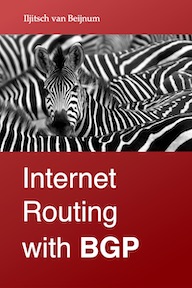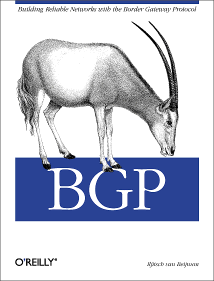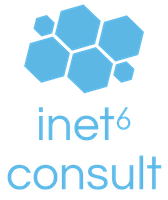
|

|

|
|
Home ·
BGP Expert Test ·
What is BGP? ·
BGP Vendors ·
Links ·
Archives ·
Books ·
My New BGP Book | ||
 (advertisement)
(advertisement)
| ||
|
Bogon route filtering (posted 2002-10-27)
Stephen Gill has added Application Note: Securing BGP on Juniper Routers to his list of documents. (The list includes some other documents discussing BGP on Juniper routers, among other things.) He spends a little too much time on filtering "bogons" (address space that isn't allocated or otherwise unroutable) in my opinion, but there is a lot of good stuff in there. Bogon filtering for input will buy you a 35% or so reduction in abusive traffic if you are under a DoS attack with randomly falsified source addresses. Bogon filtering for outbound traffic will buy you next to nothing since if you already do it for incoming, your servers won't have to reply to requests seeming to come from this address space so all that's left is hosts in your network deciding to send packets to bogon space themselves. My remarks about bogon filtering have not gone unchallenged. Both Stephen Gill (Steve's site) and Rob Thomas (Rob's site) told me bogon filtering can be very useful to get rid of a significant percentage of abusive packets. Especially filtering on bogon source addresses is useful: this stops incoming packets with obviously falsified source addresses. Rob tells me this can be upwards of 50% of the abusive traffic for some attacks. Filtering on bogon destinations (which doesn't have any performance impact if you just route the bogon ranges to the null interface) gets rid of traffic hosts on your network or customer networks send to non-existent destinations. This traffic is usually scans (port scans or worms) but it can also be replies to incoming packets with bogon sources if those aren't filtered. My main problem with bogon filtering is that you have to keep on top of new /8s assigned to the Regional Internet Registries (RIPE, ARIN, APNIC) by the IANA and change your filters accordingly. A better way to do this is with unicast RPF. If you use uRPF and run full routing without a default, all packets with source addresses for which there is no route in the routing table will be dropped so exit bogon sources. Bogon destinations get a "host unreachable" because without a default route the the router has no place to send them. However, the generally available version unicast RPF on Cisco routers breaks asymmetric routing, which is very common in ISP and multihomed networks. Cisco has improved the uRPF feature to get around this, but this improved uRPF isn't widely available across platforms and IOS images. See Cisco's uRPF_Enhancement_4.pdf document for more information on the new uRPF capabilities. It seems Cisco doesn't like people linking to their stuff, so this link most likely doesn't work. If you have CCO access, you can probably find the document through "regular channels" and typing the name in a search engine will help you find find it elsewhere.
|
